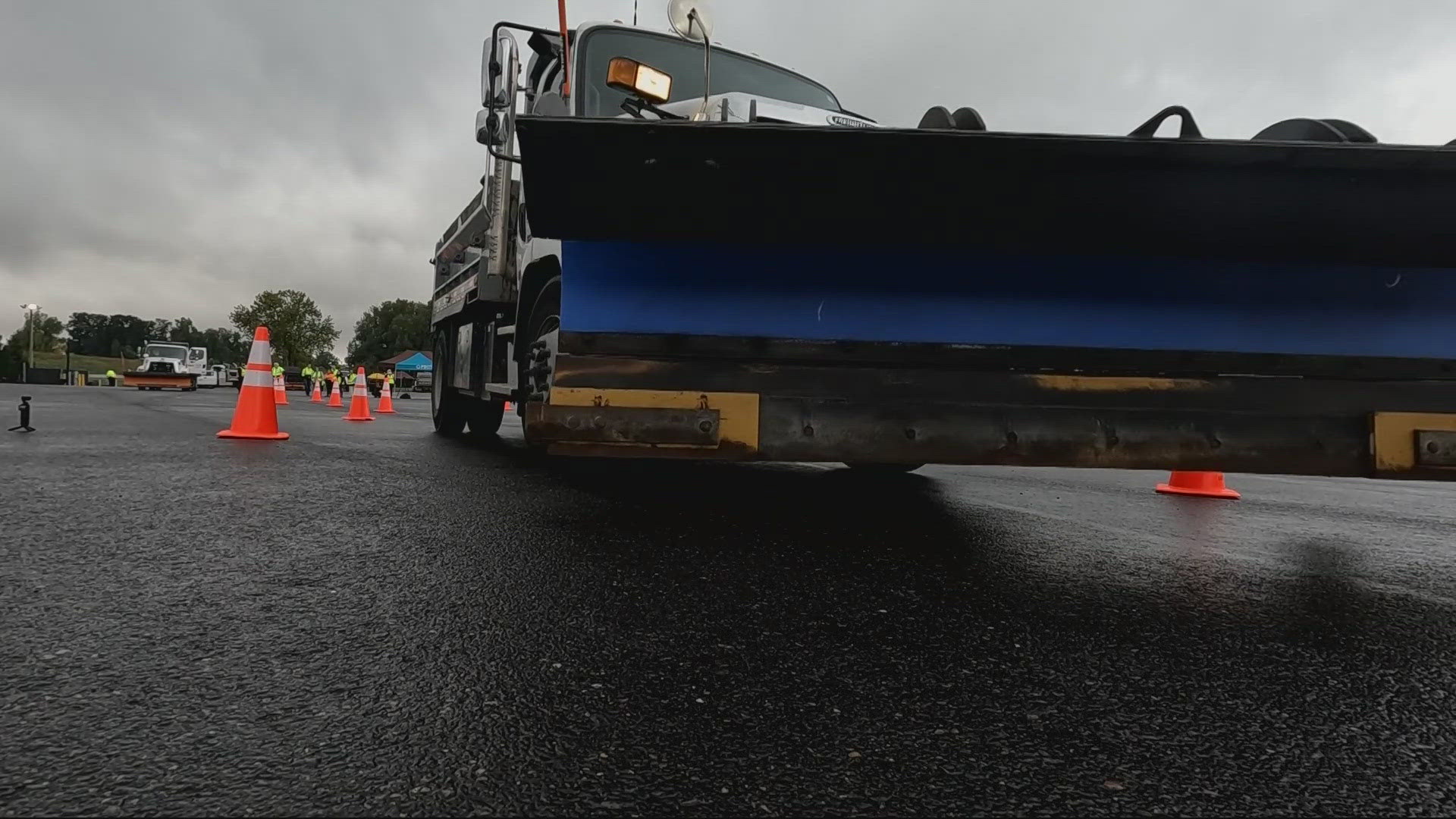PORTLAND, Ore. — The parking lot of the Portland International Raceway saw a different kind of course created in its parking lot on Tuesday. A maze of orange cones was laid out to help snow plow drivers with the Portland Bureau of Transportation (PBOT) reacclimate themselves to plows they haven't driven in months.
"At this point, it's more or less of a refresher because we do it when the snow hits and we don't touch a snow plow or drive a truck set up this way until this training." Zach Kreis, one of the PBOT drivers on the course said.
Throughout the year, Kreis works as an environmental systems crew leader for PBOT, but during snowstorms, he'll work nights when needed as a snow plow driver.
"We do it as long as the snow is out, or ice. We lose our weekends. We lose time at home with our families," Kreis said.
The course is a simulation of what driving a large dump truck retrofitted with a snow plow up front can feel like. It's not meant to replace the real thing of driving on a city street covered in snow, but it does help drivers like Kreis shake off the rust before heading out for the real thing.
"You can't see the fog lines, the curbs. You can't see anything that helps you put yourself in the center of the road or the lane," Kreis said.
Each driver has their own designated route that they'll drive throughout the city when the snow storm hits. Drivers will spend the next several weeks preparing for any major snowstorm by driving through courses like the one at the Portland International Raceway. While also doing test runs through the assigned routes to give them a better understanding of what's on the streets, like speed bumps or islands that could be covered up in snow.
"We practice," Millicent Williams, director of PBOT said. "So practice makes perfect, so if we stay ready, we don't have to get ready. They're gonna be ready."
Williams says PBOT has 55 trucks ready to go in their fleet of vehicles equipped to handle the snow.
"We can always have more, but 55 allows us to cover our major routes," Williams said. "That's the main arterials, the collectors, the streets of greatest significance. We aren't able to go into neighborhoods, but that is a practice across the country. We don't typically go into residential neighborhoods to clear."
Kreis says there is a sense of satisfaction once the plows move down a street and he can help drivers get moving again.
"Honestly, it's just fun seeing what the road looks like after we touch it. Seeing the snow move, it's a pretty good time."
Both Kreis and Williams say the biggest message to drivers when the snowplows are out is to give them room.
"If they must be out driving around, if they see a plow on the road pull over to the side or slow down and let us pass. Don't follow too quickly or too closely," Kreis said.

